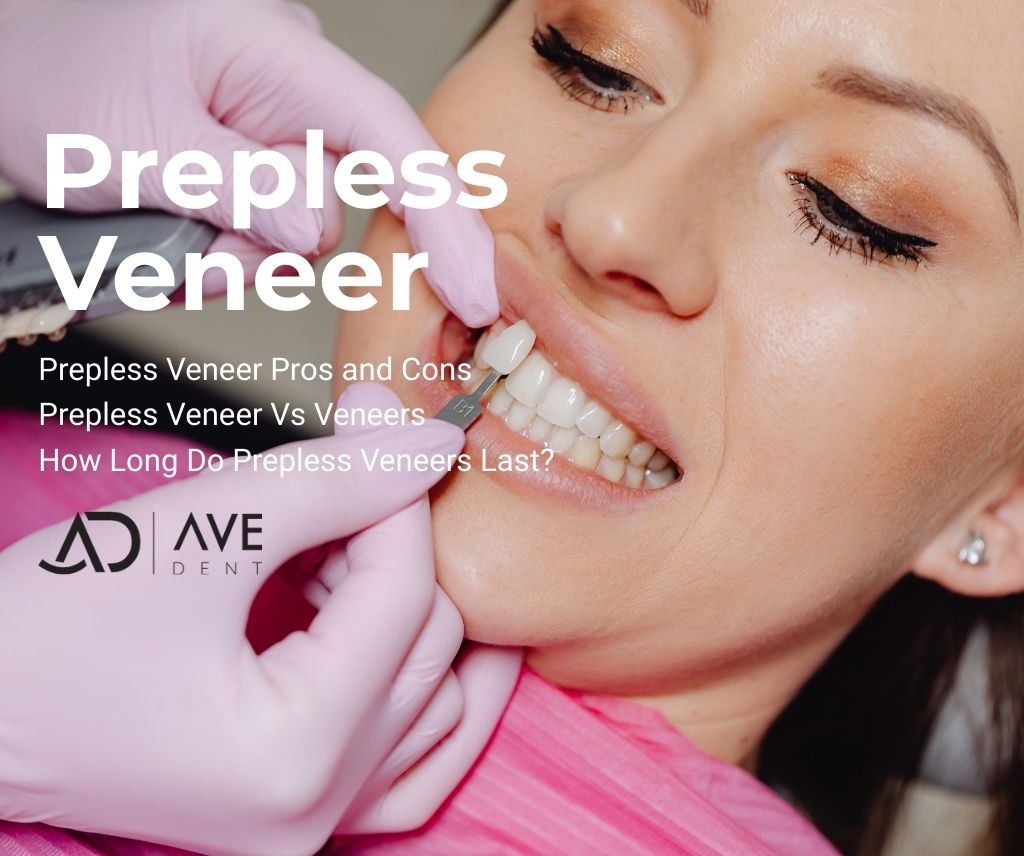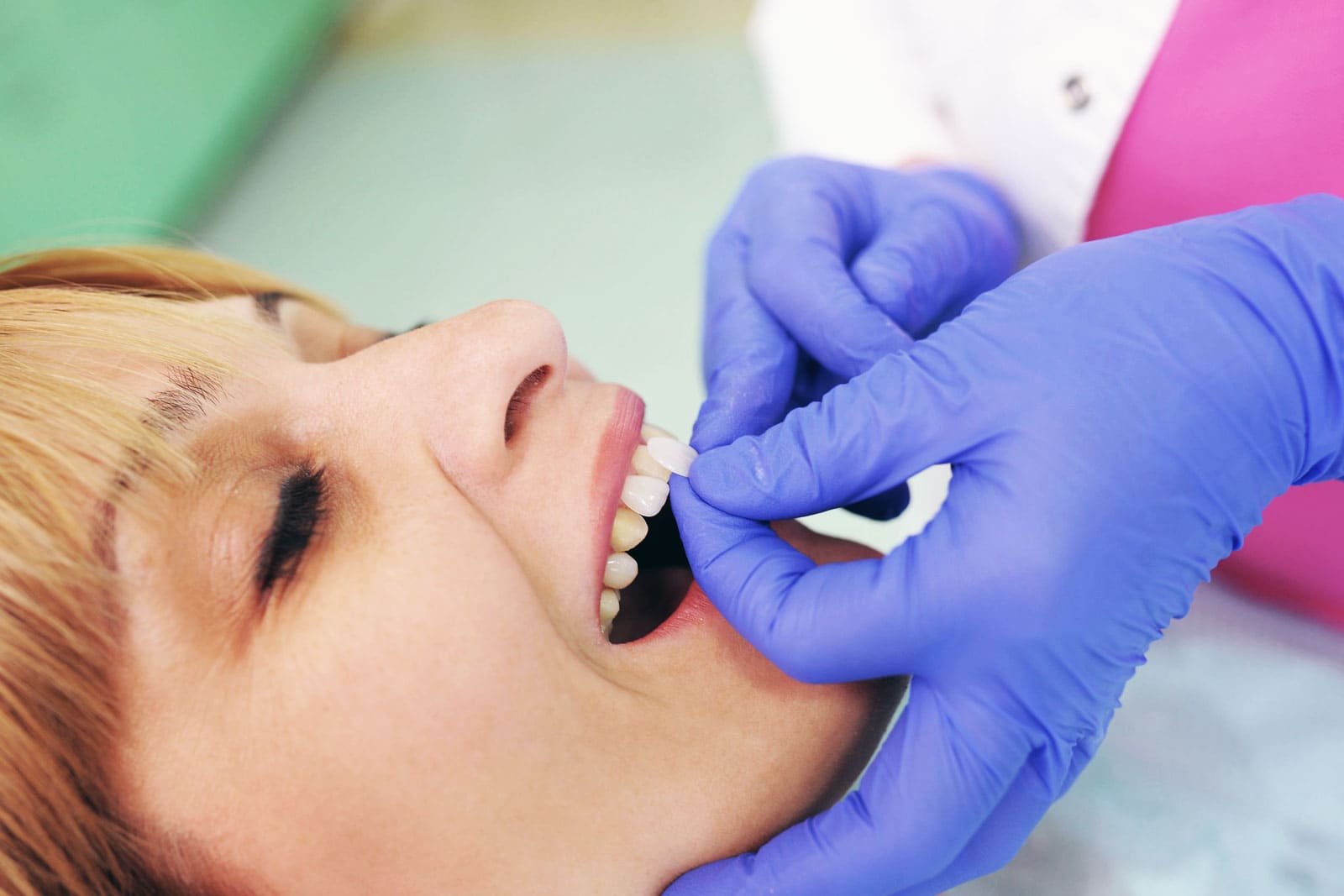Prepless
(No-Prep) Veneers
in Turkey

The appearance of teeth may need to be altered for various reasons, and in such cases, various prosthetic procedures may be required to provide the necessary treatment. However, when dental tissues are healthy, preserving them to the maximum extent possible is crucial for maintaining the health of the teeth. Some treatment methods allow application without any abrasion on these tissues, provided that the appropriate conditions are present. In this context, the prepless veneer procedure stands out as a viable treatment option.
What are Prepless Veneers?
Prepless veneers are prosthetic procedures that cover only the front surfaces of teeth and are applied without the need for adjustments to natural tooth structures. Made from materials that are compatible with tooth structure in many areas, these applications enable highly natural-looking treatments. With this treatment method, broken teeth can be restored quickly and in line with aesthetic expectations. This treatment method eliminates aesthetic concerns caused by the size characteristics or discolouration of teeth. They may be preferred for filling gaps in individuals with spaced teeth.
You can contact us to have prepless veneers, also known as non-prep laminates that preserve tooth structure to the maximum extent, applied at Avedent, one of Turkey, Istanbul’s best dental clinics.
Prepless Veneer Price in Turkey
Prepless veneer prices in Turkey may vary depending on the condition and number of teeth to be treated. To find out the exact prices of prepless veneers tailored to your needs, please contact us.
Prepless Veneer vs Laminate Veneer
Prepless veneers are applied without grinding the tooth surface, but laminate veneers require preparation of the tooth surface.
Procedures using prepless veneers can be completed in less time than laminate veneers. If the patient wishes to return their teeth to their natural state, prepless veneers can be removed, allowing the patient to regain their teeth’s original form. However, if laminate veneers need to be removed, a new restoration procedure must be planned for the relevant teeth.
The Differences Between Prepless Veneers and Laminate Veneers
- It allows for the complete preservation of healthy tooth structures.
- In a comparatively short amount of time, treatment can be finished. This allows for an effective change in the person’s smile profile within a short timeframe.
- It allows the person to return to their natural smile profile before treatment whenever they wish.
How are Prepless Veneer treatments done?
During the first scheduled session, detailed clinical and radiographic examinations are performed, and the suitability of the teeth for the prepless veneer procedure is assessed.
If suitable conditions are met, impressions are taken of the teeth in their current state and evaluated along with various data. The prostheses to be made are designed in general terms based on the impressions taken after determining the characteristics required for a healthy application.
The design features are detailed by considering various parameters such as the person’s facial features, expectations, age, and character traits. Then, design alternatives are presented to the patient, and the final design is determined together with the patient. In the next step, the prostheses are manufactured in the laboratory to match the specified appearance.
The prepared prosthesis is tested on the patient’s teeth, and minimal adjustments can be made at this stage if necessary.
When the prosthesis is fully compatible with the tissues, the prepless veneers are fixed to the teeth with a special adhesive, and the treatment is completed.
Prepless Veneers: Pros and Cons
Pros of Prepless Veneers
- Minimally Invasive
Since little or no enamel is removed, your natural teeth remain largely intact. This makes prepless veneers a less aggressive option compared to traditional veneers. - Quick Procedure
Prepless veneers typically require fewer appointments and less chair time, allowing you to achieve your desired smile faster. - Reversible in Some Cases
Because your teeth are not significantly altered, prepless veneers may be removed or replaced more easily than traditional veneers. - Natural Appearance
Modern prepless veneers are crafted to look realistic, giving your teeth a natural and attractive finish. - Less Sensitivity
Preserving enamel usually reduces the risk of post-procedure tooth sensitivity. - Immediate Smile Improvement
Patients often notice an instant improvement in tooth colour, shape, and alignment.
Cons of Prepless Veneers
Limited Suitability
Prepless veneers are not suitable for everyone. Severe discolouration, large gaps, or major misalignment may require traditional veneers or orthodontic treatment.Potential Bulkiness
Because no tooth structure is removed, some veneers may feel slightly thicker, which can affect comfort and bite.Durability Concerns
Prepless veneers may be less strong than traditional veneers, especially for patients who grind their teeth or have strong bites.Cost
Despite being less invasive, high-quality prepless veneers can still be expensive due to the precision and material required.Limited Color Masking
They may not fully cover very dark or discoloured teeth since the enamel underneath remains.
How long do no prep veneers last?
Prepless veneers are a minimally invasive dental solution designed to enhance the appearance of your teeth without removing enamel. With proper care and regular dental check-ups, prepless veneers can last 5–15 years, providing a durable, natural-looking smile that maintains its brightness and shape over time.

Aftercare for Prepless Veneers
Prepless veneer procedures avoid problems such as sensitivity after treatment because they do not involve grinding. The person can return to their routine life immediately after treatment. Routine oral and dental hygiene practices are sufficient for the care of prostheses. In this context, brushing teeth and regular flossing can ensure a long-lasting treatment.
Another factor that affects the longevity of the treatment is scheduling follow-up appointments at intervals recommended by the dentist after the treatment. These follow-up appointments can enable an early diagnosis of any conditions that may jeopardise the health of the prosthesis.
In this case, problems can be treated before irreversible damage occurs, ensuring the long-term use of the prosthesis.
